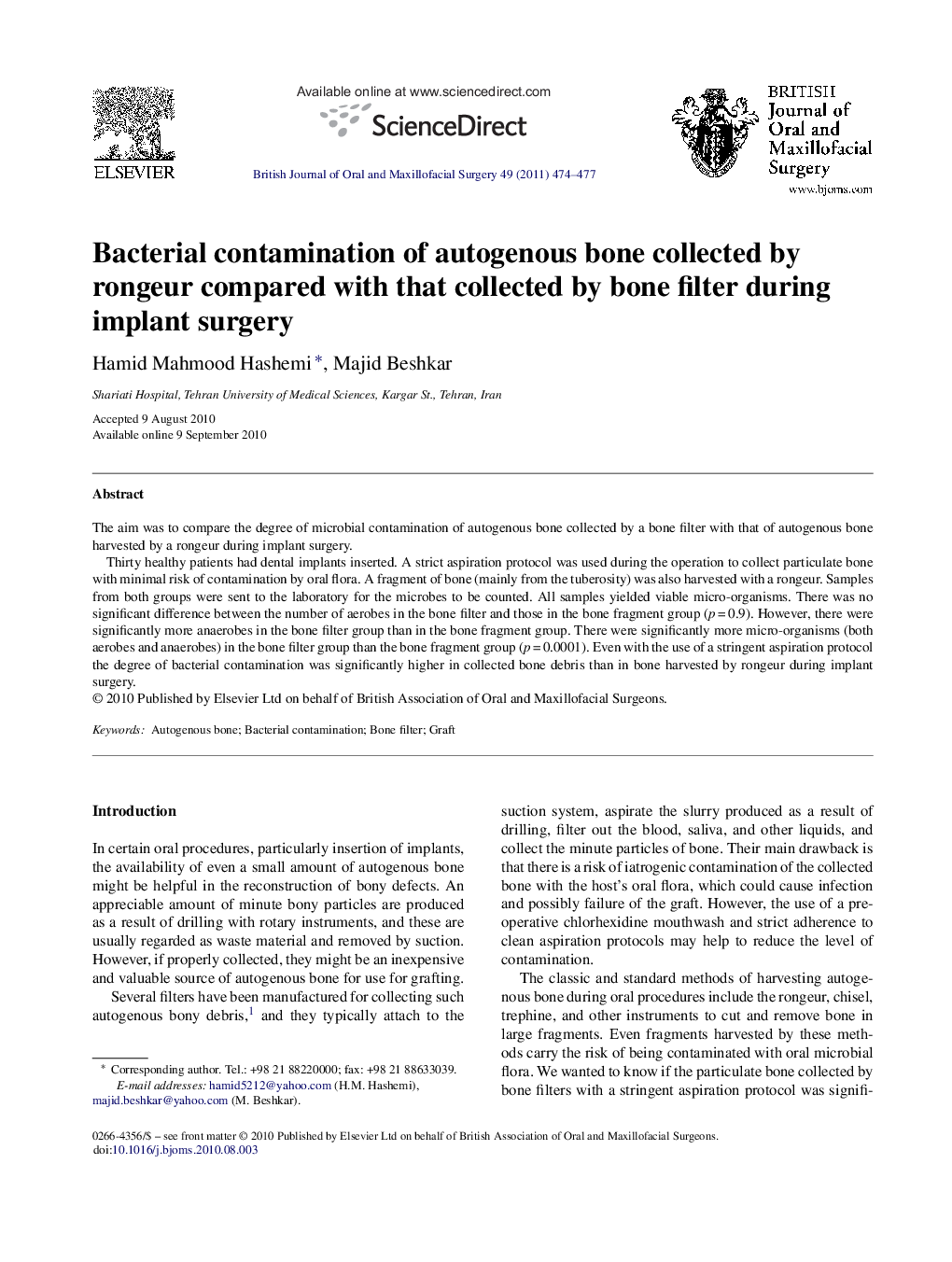| Article ID | Journal | Published Year | Pages | File Type |
|---|---|---|---|---|
| 3124912 | British Journal of Oral and Maxillofacial Surgery | 2011 | 4 Pages |
The aim was to compare the degree of microbial contamination of autogenous bone collected by a bone filter with that of autogenous bone harvested by a rongeur during implant surgery.Thirty healthy patients had dental implants inserted. A strict aspiration protocol was used during the operation to collect particulate bone with minimal risk of contamination by oral flora. A fragment of bone (mainly from the tuberosity) was also harvested with a rongeur. Samples from both groups were sent to the laboratory for the microbes to be counted. All samples yielded viable micro-organisms. There was no significant difference between the number of aerobes in the bone filter and those in the bone fragment group (p = 0.9). However, there were significantly more anaerobes in the bone filter group than in the bone fragment group. There were significantly more micro-organisms (both aerobes and anaerobes) in the bone filter group than the bone fragment group (p = 0.0001). Even with the use of a stringent aspiration protocol the degree of bacterial contamination was significantly higher in collected bone debris than in bone harvested by rongeur during implant surgery.
